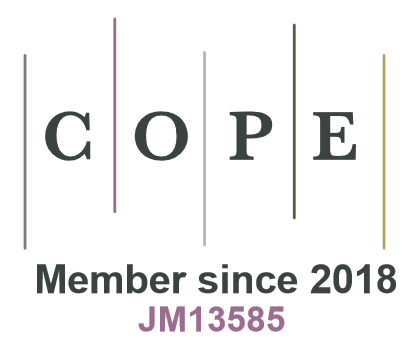article id 25013,
category
Research article
Highlights:
Harvester-mounted LiDAR consistently estimated low vegetation height and volume comparable to handheld and drone LiDAR; Enhancing LiDAR range could improve harvester LiDAR efficiency, reducing processing time and increasing accuracy beyond 20 m.
Abstract |
Full text in HTML
|
Full text in PDF |
Author Info
Evaluating the potential of a harvester-mounted LiDAR system in monitoring biodiversity indicators such as low vegetation during forest harvesting could enhance sustainable forest management and habitat conservation including dense forest areas for game. However, there is a lack of understanding on the capabilities and limitations of these systems to detect low vegetation characteristics. To address this knowledge gap, this study investigated the performance of a harvester-mounted LiDAR system for measuring low vegetation (height <5 m) attributes in a boreal forest in Finland, by comparing it with handheld mobile laser scanning (HMLS) and drone laser scanning (DLS) systems. LiDAR point cloud data was collected in September 2023 to quantify the low vegetation height (maximum, mean, and percentiles), volume (voxel-based and mean height-based) and cover (grid method). Depending on the system, LiDAR point cloud data was collected either before (HMLS and DLS), during (harvester LiDAR) or after (HMLS and DLS) harvesting operations. A total of 46 fixed-sized (5 m × 5 m) grid cells were studied and analyzed. Results showed harvester-mounted LiDAR provided consistent estimates with HMLS and DLS for maximum height, 99th height percentile, and volume across various grids (5 cm, 10 cm, 20 cm) and voxel (20 cm) sizes. High correlation was observed between the systems used for these attributes. This study demonstrated that harvester-mounted LiDAR is comparable to HMLS and DLS for assessing low vegetation height and volume. The findings could assist forest harvester operators in identifying potential low vegetation and dense areas for conservation and game management.
-
Kafle,
School of Forest Sciences, University of Eastern Finland (UEF), Yliopistokatu 7, FI-80101 Joensuu, Finland
 https://orcid.org/0000-0003-0744-3480
E-mail:
binod.kafle@uef.fi
https://orcid.org/0000-0003-0744-3480
E-mail:
binod.kafle@uef.fi

-
Kankare,
Department of Geography and Geology, University of Turku, FI-20014 Turun yliopisto, Finland
 https://orcid.org/0000-0001-6038-1579
E-mail:
viveka@utu.fi
https://orcid.org/0000-0001-6038-1579
E-mail:
viveka@utu.fi
-
Kaartinen,
Department of Remote Sensing and Photogrammetry, Finnish Geospatial Research Institute (FGI), Opastinsilta 12 C, FI-00520 Helsinki, Finland
 https://orcid.org/0000-0002-4796-3942
E-mail:
harri.kaartinen@nls.fi
https://orcid.org/0000-0002-4796-3942
E-mail:
harri.kaartinen@nls.fi
-
Väätäinen,
Natural Resources Institute Finland (Luke), Yliopistokatu 6 B, FI-80100 Joensuu, Finland
 https://orcid.org/0000-0002-6886-0432
E-mail:
kari.vaatainen@luke.fi
https://orcid.org/0000-0002-6886-0432
E-mail:
kari.vaatainen@luke.fi
-
Hyyti,
Department of Remote Sensing and Photogrammetry, Finnish Geospatial Research Institute (FGI), Opastinsilta 12 C, FI-00520 Helsinki, Finland
 https://orcid.org/0000-0003-4664-6221
E-mail:
heikki.hyyti@nls.fi
https://orcid.org/0000-0003-4664-6221
E-mail:
heikki.hyyti@nls.fi
-
Faitli,
Department of Remote Sensing and Photogrammetry, Finnish Geospatial Research Institute (FGI), Opastinsilta 12 C, FI-00520 Helsinki, Finland
 https://orcid.org/0000-0001-5334-5537
E-mail:
tamas.faitli@nls.fi
https://orcid.org/0000-0001-5334-5537
E-mail:
tamas.faitli@nls.fi
-
Hyyppä,
Department of Remote Sensing and Photogrammetry, Finnish Geospatial Research Institute (FGI), Opastinsilta 12 C, FI-00520 Helsinki, Finland
E-mail:
juha.coelasr@gmail.com
-
Kukko,
Department of Remote Sensing and Photogrammetry, Finnish Geospatial Research Institute (FGI), Opastinsilta 12 C, FI-00520 Helsinki, Finland
 https://orcid.org/0000-0002-3841-6533
E-mail:
antero.kukko@nls.fi
https://orcid.org/0000-0002-3841-6533
E-mail:
antero.kukko@nls.fi
-
Kärhä,
School of Forest Sciences, University of Eastern Finland (UEF), Yliopistokatu 7, FI-80101 Joensuu, Finland
E-mail:
kalle.karha@uef.fi



